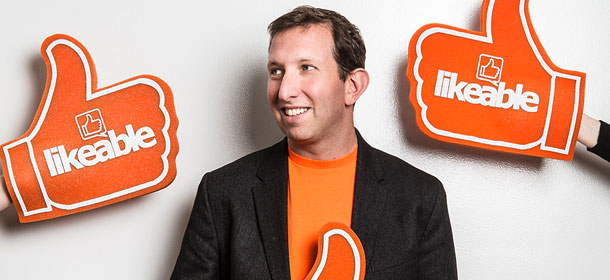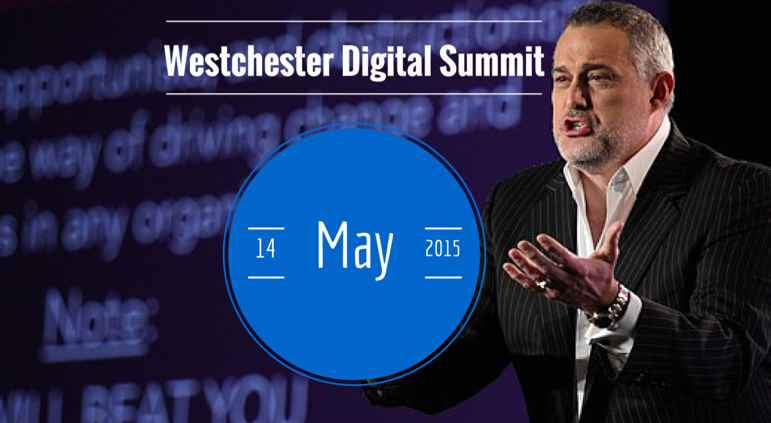Addressable Media - Connecting the World 340 Trillion, Trillion, Trillion Times
Frank Golding is a former Director at Google, where he worked on product, sponsorship and creative strategies. He initially joined Google as YouTube‘s Director, Head of Sport for North America, creating sports partnerships for leagues, teams and athletes – across professional, college and high school sports — to help them connect more deeply to YouTube’s one billion monthly users. Prior to YouTube, he spent nearly nine years at ESPN working on digital deals across all of ESPN’s U.S. content platforms. Frank holds a JD from UVa and an MBA from MIT.
Frank is also the author of this post.
I had a great conversation with Chris Dessi after WDS3, and wanted to write a bit on IPv6. This is that bit. Let’s hit some facts. Today we can create 340 trillion, trillion, trillion URLs (through IPv6, an addressing format that’s been in development since the mid 1990’s). That is 340 followed by 36 zeroes. To put this in perspective, that is 340 billion, billion, billion URLs for every person living on the planet in … 2100. It is 56.9b URLs for every gram on earth. (The WSJ had reported that IPv6 created enough URLs for every atom on earth, but later corrected itself. We have about 132 followed by 48 zeroes more atoms than IPv6 URLs.)
This is an extraordinary jump. IPv4, developed in 1981, had, a relatively puny, 4.3b unique IP addresses - a number we can comprehend (it is, for example, less than 25% of Google’s revenue for Q1’15). We didn’t really use these powers until 1985, at which point by year’s end we had six .com URLs, wildly growing to 100 .com URLs in 1987. Today (March 2015) someone registers a .com every second - 31.5m .com URLs every year.
Presumably in 1984, 4.3b unique IP addresses surely seemed to “be enough.” We were wrong. So riddle me this, is 340 trillion, trillion, trillion IP addresses enough? Not necessarily, but like 1984, it sure seems to be enough.
The “address” is our keystone to the archways of a new world. The ability to attach an “address” to a place, a person, a robot, thing, feature, function, even a cell opens unimaginable and unforeseen opportunities for new media and businesses; personalized healthcare and energy. The next “Facebook” is the machine-readable ‘social’ platform connecting quintillions (18 zeros) of machine ‘pages’.
It will do wonders for video. Imagine a URL for every pixel on every frame of every video uploaded on YouTube. Last year YouTube handled ~300+ hours of uploaded video every minute, and permitted uploads in Ultra 4K @ 60 fps. Now let’s amp things up. Let’s move that from 300 hours to 10K hours, and assume every video @60fps is uploaded in 8k fulldome. (8K fulldome is 8192×8192 - or 67.1 megapixels - used in modern projection for hemispherical theatres (think planetaria).) This is not likely. Most of the next 5b online denizens will not have a device capable of producing or watching 8K fulldome, let alone you or me. But … if they did, we would have enough URLs for every pixel of every video uploaded to YouTube during the next ~4.5 quadrillion years. That seems like a long runway, and it doesn’t even account for dynamic URLs (ones that lapse and are reassigned).
The possibilities are limitless. Security increases, and instant alterations to a pixel can create multiple viewpoints, new storytelling methods evolve, VR and AI explodes. Add 1Gb transmission, and this is a very different world.
Here is the rub. It may not be enough. 2b people are projected to come online by the end of 2016. In addition to those media consumers, the Internet of Things, v2x communications, new forms of data transmission and metadata — all could use an address. If the number of addresses we use increases by 10x every year, we will run out of addresses in ~30yrs. 1985 → 2014; we’re out of addresses — 29 yrs. 2015 → 2045; we’re out of addresses — 30 yrs.
30 years is a mighty long time during which our creations - ingestible media, cloud based plug’n’play brains, sound from silent video, wireless electricity, virtual reality, robotics, personalized healthcare, ephemeral media — will be incredible. Our IPv6 addresses will open the doors to advances and communications that we are just beginning to fathom.
And then we’ll need a few more addresses.
Frank Golding
[email protected] // 917-626-7959



